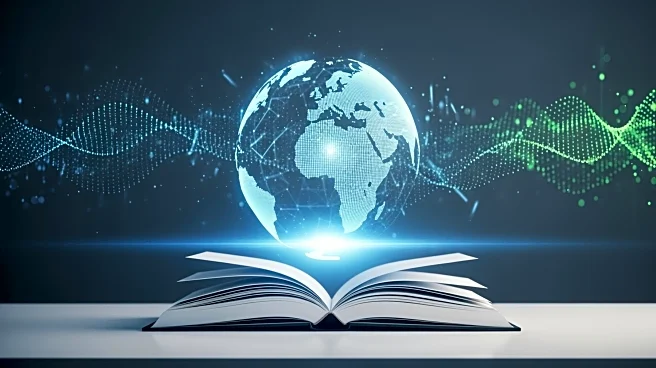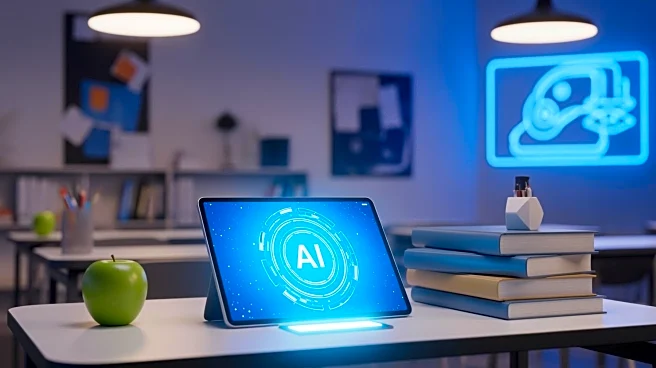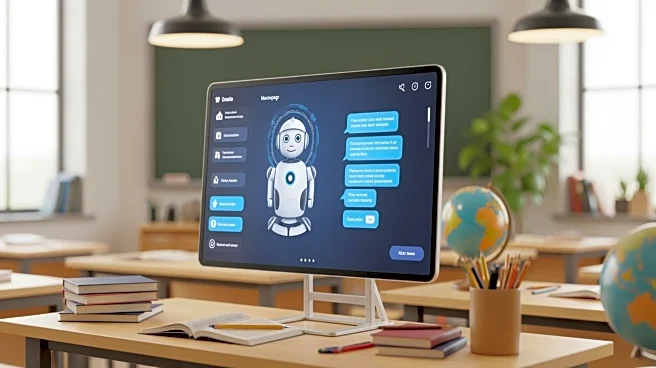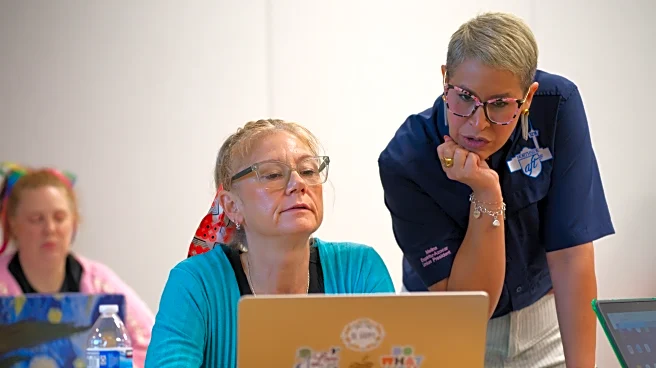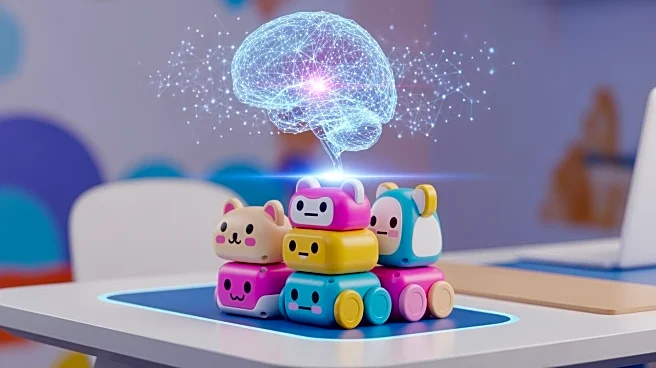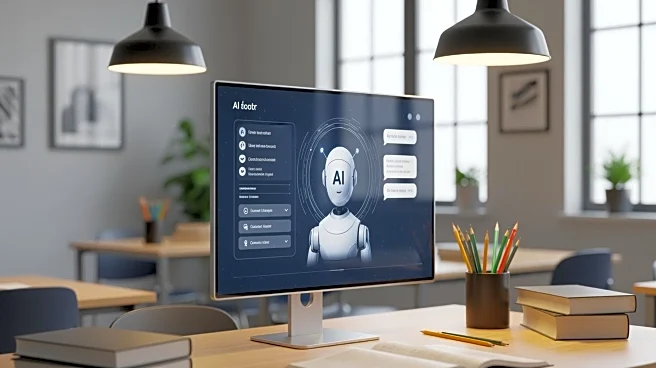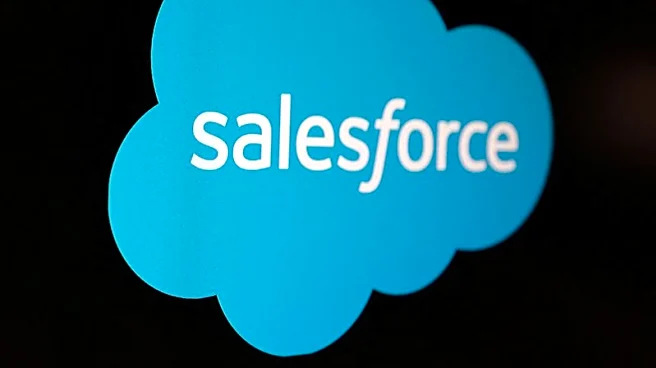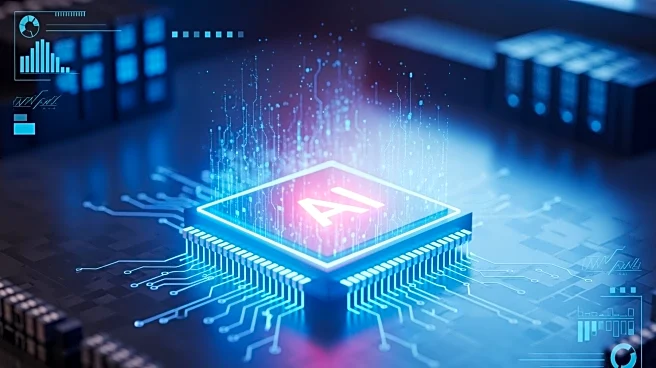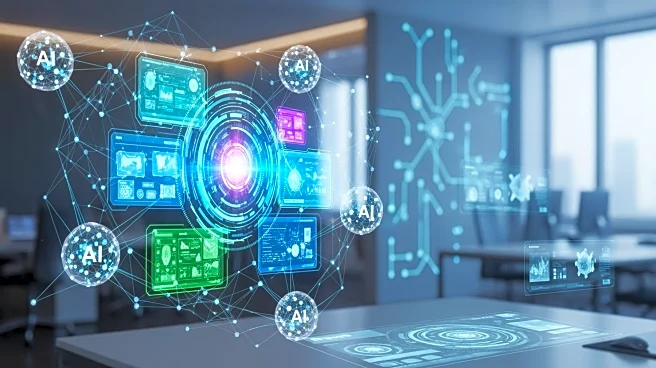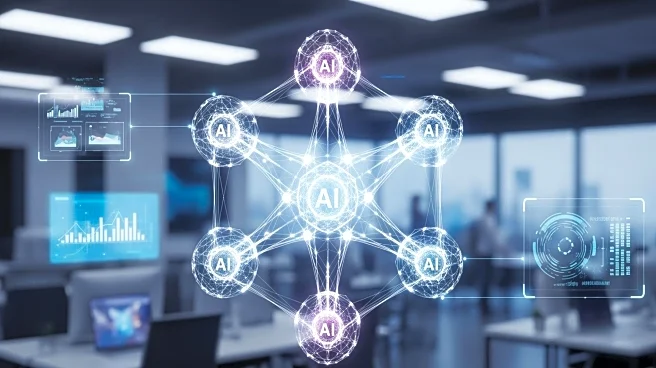What's Happening?
Major technology companies, including Microsoft, OpenAI, and Anthropic, are partnering with the American Federation of Teachers (AFT) and the National Education Association (NEA) to provide substantial
funding for AI training programs. Microsoft is contributing $12.5 million to AFT over five years, while OpenAI and Anthropic are providing $8 million and $500,000, respectively. These funds will be used to establish AI training hubs and workshops aimed at training 400,000 teachers over the next five years. The NEA has also received a $325,000 grant from Microsoft to develop AI training microcredentials for its members. This initiative is part of a broader effort to integrate AI into educational settings, ensuring that teachers are equipped to use AI tools effectively in classrooms.
Why It's Important?
The collaboration between tech companies and teachers unions is significant as it addresses the growing need for AI literacy in education. As AI becomes increasingly prevalent, equipping teachers with the necessary skills to integrate AI into their teaching practices is crucial. This initiative not only aims to enhance the quality of education but also prepares students for a future where AI plays a central role. The involvement of major tech companies highlights the potential for private-public partnerships to drive educational innovation. However, it also raises questions about the influence of tech companies in educational settings and the need for careful oversight to ensure that educational goals remain the priority.
What's Next?
The establishment of AI training hubs and the rollout of training programs are expected to commence soon, with the goal of training a significant number of teachers in the coming years. As these programs develop, there will likely be ongoing discussions about the role of AI in education and the balance between technological advancement and educational integrity. Stakeholders, including educators, policymakers, and tech companies, will need to collaborate to address potential challenges and ensure that AI integration benefits both teachers and students.
